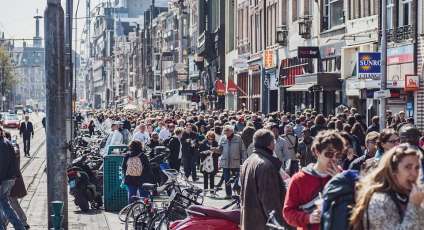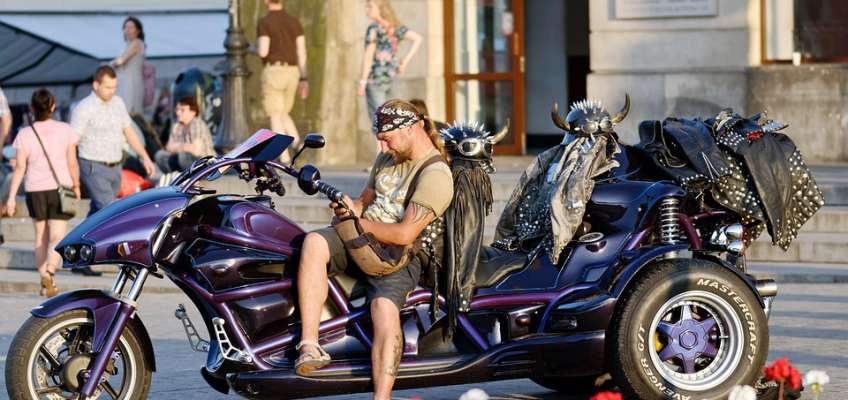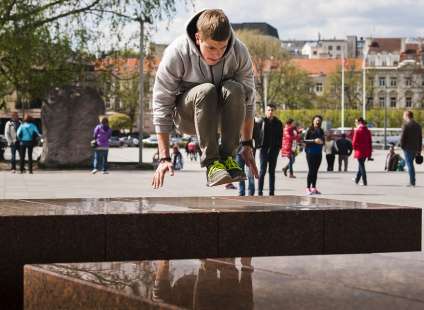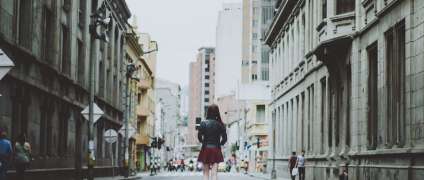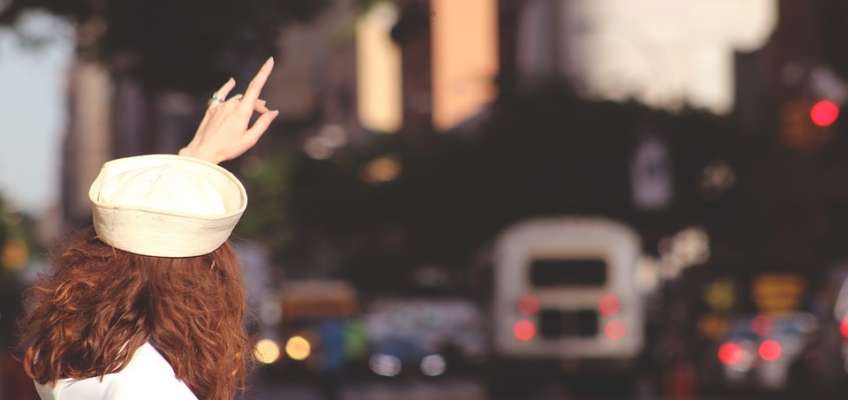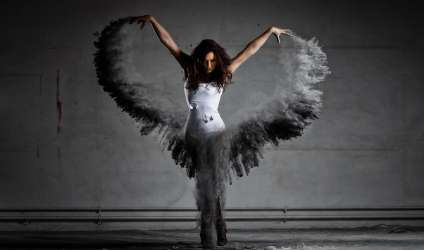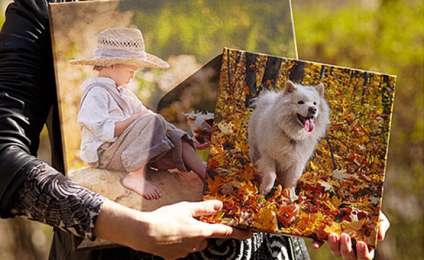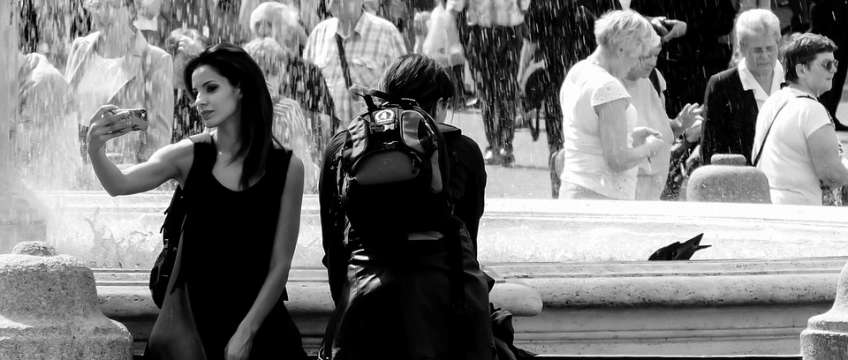Posed and spontaneous photo. Which is cooler?
Published: 25.10.2019

By nature, people strive for truth. When looking at photographs, we want to see the real story, observe the actual process. We want there to be no deception. But even a spontaneous photo can be insincere.
Often it is impossible to recreate the real picture of what is happening from photographs, also because some or all of them may be staged.
In this article, we will explain how the skillful use of staged and spontaneous photographs can enhance your work.
"Spontaneous photos"
Today, at the dawn of the digital age, posed photographs have become tiresome. The sincerity and candor of spontaneous photography, capable of telling a true story, feels like a breath of fresh air. It captures not only the time and place, but also the natural expression of emotions and personality.
The right moment can bring life to your photo. A lone traveler can add a story to an empty and dull landscape. Street photography, undoubtedly, depends on the right moment of shooting. So, what can you do to add that X-factor to your shot?
"Capture where life is bubbling"
To train your body, you go to the gym, the pool, or for a run. But to learn how to take spontaneous photos, you need to visit places where many events are happening. There you will learn to always be alert and never miss a moment worthy of a shot. The inability to have a second take is the main difference between spontaneous photography and staged photography.
Go to the nearest market. Find out when it is most crowded there. Note that at some markets, the busiest time is at night or early in the morning. The vendors displaying their goods, preparing street food, and the trading process itself are great subjects for spontaneous photos.
Visit sports competitions, festivals, and parties. These are great places for spontaneous photography. Friends becoming competitors, an artist interacting with fans, or a romantic dance - all suitable stories for a photo shoot. For shooting at events, bring a telephoto lens.
Shoot on a busy street. Street photography may not be the most original practice, but it is very effective. Grab your 50mm lens and head out to hunt for interesting characters. Look for events at intersections and public transport stops. You will definitely capture your story with a unique urban flair.
Experiment with the focal length
Most cool spontaneous photos are taken outdoors. The general rule here is to use a 50mm lens, although other focal lengths can also produce great shots. A longer focal length will allow you to be further away (and less noticeable) from the subject, giving a sense of comfort. It's easier to capture the moment from a distance and learn to wait. With practice, you can shorten the distance and evaluate the changes in results. Of course, this does not apply to sports photography, where long focal length optics are essential.
"The most unspontaneous spontaneous photos"
Prepare the frame in advance, wait for the right person to take the right position in your photo - and click the shutter. The approach is similar to a staged shoot, but everything happens naturally. Be patient: you may have to wait a while.
Composition. Frame your shot and wait for a person to enter it. This will immediately add action to your photograph. Ideally, take the same shot with different people in the main role to choose the best one.
A ray of light. An easy way to capture the moment is to wait for people to enter the ray of light. You will receive a clear signal to press the shutter button. Be prepared and don't miss the decisive moment. Look for a room with a leaky ceiling or a tree with a canopy that lets in the sunlight.
"Instant reaction"
During spontaneous shooting, you need to act quickly. You need eyes in the back of your head to not miss opportunities and see everything around you. Set up your camera in advance. A closed aperture, for example, f/8 instead of f/1.8, focuses much faster. But be careful: don't forget to open the aperture for shooting in low light.
By practicing shooting in busy places and capturing faces lit by sunlight, you will be able to quickly bring the camera to your eye and take a picture immediately.
Learn to showcase your finished work. Both staged and spontaneous photographs require an audience, emotions, and evaluation. Create a portfolio of your work. We offer to print photos directly into a Light album. The new photo printing format effectively presents your work.
"Staged photo"
Staged photos are antagonists of spontaneous ones. This style is used with models and for wedding photography. If you want to get a bright emotional photo while controlling all its aspects, staging will give you the freedom to be creative. What is the secret to the success of staged photography?
"Capture stories"
Thorough preparation ensures the success of your photo. Your photograph should have a strong storyline, which you guide the viewer's gaze through the frame. Don't wait for the perfect moment for a staged photo. Create it yourself!
The shooting location should correspond to the idea of the photograph. Good photos can be taken against the backdrop of compositional lines and rows, for example - road markings, a tunnel, or a waterfront parapet. Strive to create a strong composition, achieve harmony between the composition and the subject of your photo.
Use accents and don't forget about the background. Even if you're not shooting in a studio, use design elements that suit the subject. Place them in key points of the frame. And make sure to pay attention to the background - a random person in the background can ruin a carefully planned photograph.
Natural lighting determines the mood of a photograph. Nothing justifies taking a photo against the sun. This applies to both staged and spontaneous shots. Make sure to pay attention to the direction of the sunlight when shooting.
Should you use artificial light or stick with natural light? If you prefer only natural light, use reflectors to direct it where needed. But if you need street photos of studio quality, you can't do without a softbox and a strobe.
Be a bit of a stylist. Another detail of a staged photo shoot is the model's clothing. Talk to the model before the photo shoot. Choose clothes and accessories that match the idea of the photo shoot and the location. The time spent will be more than worth it with a strong, harmonious result.
Choose the right location. No matter if the shooting is spontaneous or staged, the location should correspond to both the plot and the model. Some plots are best suited for crowded places, while others are better in quiet corners.
Creative approach
Conceptual photos, unlike spontaneous ones, allow for the use of complex artistic techniques that require preparation time. There are many ways to express a creative approach in your work. It is not necessary to use these techniques to convey your creative essence, but they are simple and suitable even for beginners. Remember: too much creativity is also not good.
Light painting. An original way to draw attention to your nighttime photos. You will need a flashlight, long exposure, and a model capable of standing or sitting still for hours.
Prism effect. A photograph taken through a prism or fractal filter becomes fantastic and incredible. Use these methods only if they fit the subject.
Dynamic flour. If you want to capture the dynamics in a photo, toss two handfuls of flour into the air and take the picture with an external flash. The flash should be directed straight at the flour settling in the air.
"Every photo is a masterpiece! Don't hide unique shots from viewers in your phones and cameras. A worthy way to showcase your talent and preserve memories is to print photos on canvas."
"All methodologies are important, all methodologies are necessary"
Sometimes I feel like saying, "I'm going to become a street photographer, I don't need all this staging." It makes sense to become a pro in one thing, rather than trying to do it all. However, your models will soon run to the photographer who knows what's happening in front of the camera. Once you understand the setup of photos, you will be able to look at the possibilities of spontaneous shooting in a different way.
Once you understand how to set up your photos, you will be able to look at the possibilities of spontaneous shooting in a different way. Taking photos with an external flash, knowing where, what, and how things should be positioned in the frame are skills that can be transferred to a more natural environment of street photography. Even if you are a fashionable photographer with a lot of experience, explore these ideas and see what you can bring to your street shooting.
The pursuit of the perfect photograph is always there. A purist will most likely want to achieve this organically, using refined photographic instincts to capture the moment and to connect with their inner visual storyteller.


